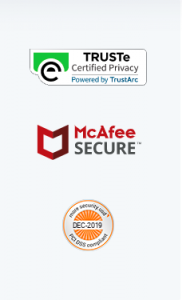Design a series of three lessons of consecutive instruction, centered on a common central focus related to the arts or PE and another content area, marked by identifiable beginning and ending points. The Integrated Learning Progression assignment will help candidates to understand and apply skills related to standards-based and aligned instruction, developing sequencing lessons with clear learning targets, considerations of UDL, and differentiation to meet the needs of diverse learners in a classroom.
Must be a High School (grades 7-12) unit plan and please remember the three lessons have to build off one another, like a full unit…I have attached the template needed for this assignment, please follow it exactly. Integrated Learning Progression Plan
NAME:_____________________________ DATE:__________________
1. Subjects: 2. Grade Level 3. Type of Class:
4. Title of Integrated Learning Progression Plan:
5. PRE-ASSESSMENT OF STUDENTS KNOWLEDGE AND SKILLS:
Determine level of academic language and/or communication needs of the general population and your Focus student, as it relates to their background and their ability and level of English Language Learning. Describe the results of prior learning of other segments and their level of comprehension or composing based on formal and informal assessments you used to gather data. Include reference to related skills.
6. STUDENTS? PERSONAL INTERESTS/CULTURAL/COMMUNITY ASSETS:
Summarize data for the entire class, groups and focus students. Indicate the area to be reflected in your segment of lessons.
7. CENTRAL FOCUS:
What is the important understanding and core concept(s) this will address between a content area and arts or PE that you want students to develop within the lesson? The central focus should go beyond a list of facts and skills, align with both content area and arts or PE standards and learning objectives, and address the subject-specific components in the learning segment.
Essential question for this central focus:
8. Learning Progression Crosswalk:
Describe one learning progression (a set of 3 lessons that build one upon another toward a learning goal, with a clearly defined beginning and end). In each column, highlight the arts or PE standards verbs in yellow and content standards verbs in blue.
Lesson # ART or PE STANDARDS
What State Learning Standards will be addressed during the lesson? (include the standard?s number, text, and link) CONTENT STANDARDS
What State Learning Standards will be addressed during the lesson? (include the standard?s number, text, and link) INSTRUCTIONAL LEARNING OBJECTIVES:
What will the students know and be able to do by the end of the lesson? Use observable teacher language related to the standards, with measurable verbs and provide assessment outcome data.)
KEY LEARNING TASK(S)
Provide a brief description of the 3 sequential lessons which build upon each other
1
2
3
8. Resources and Materials:
*Remember to reflect on the needs of your students, particularly your focus learner. Note materials and resources differentiated to support students with disabilities, MLL, struggling or gifted students.
Resources:
What books, handouts, digital resources, guest experts, library, field trip locations, etc. will you use?
Materials:
What materials will be needed (worksheets, games, projector, Smartboard, paper, pencils, art supplies, cards, post-its, etc.)
Sources:
If ideas in this lesson were based on work from others, acknowledge your sources here.
9. Prior Academic Learning and Prerequisite Skills:
What prior knowledge and skills do students need to build upon in order to be successful in these lessons?
Misconceptions:
What are common misconceptions regarding the concepts addressed in these lessons?
10. Vocabulary List
?What are content words and/or phases essential for these lessons?
?What are instructional words and/or phrases essential for these lessons?
11. Universal Design for Learning & Differentiation
?Reflection on your three lessons, consider and note three possible barriers and their UDL solutions. *Remember to consider the four primary learning modalities (i.e. sensory modalities) that allow students to learn in accordance to their learning preferences; visual, auditory, tactile, and kinesthetic.
Lesson Component Barrier UDL Solution
12. Individual Lesson Plan Details:
Lesson Plan One Details
Write an outline of your lesson, including instructional strategies, learning tasks, key questions, key transitions, student supports, assessment strategies, and conclusion. Your outline should be detailed enough that another teacher could understand it well enough to use it. Include what you will do as a teacher and what your students will be doing during each lesson phase. Include a few key time guidelines. Note: The italicized statements and scaffolding questions are meant to guide your thinking and planning. You do not need to answer them explicitly or address each one in your plan. Delete them before typing your lesson outline.
Beginning the Lesson/Introduction
Minutes [ ]
How will you pique interest and/or curiosity regarding today?s topic?
How will you activate and build on prior knowledge and experiences related to the topic?
How will you set a purpose and help students learn why today?s lesson is important to them as readers/writers/learners?
What is the lesson of the day?s learning target (3-parts?)
1. Learning Target Statement:
2. Performance of Understanding:
3. Success Criteria:
What Teacher Will Do: What Students Will Do:
Introducing New Content/Skills
Minutes [ ]
How will you introduce and explain the new information or skills so that students will understand both the how and the why?
What Teacher Will Do: What Students Will Do:
Guided Practice
Minutes [ ]
How will students be supported as they practice the new skill or interact with the new content?
Formative Assessment:
How will you monitor learning/check for understanding during these activities?
What Teacher Will Do: What Students Will Do:
Independent Practice
Minutes [ ]
How will students practice the new skill or interact with the new content independently?
Formative Assessment:
How will you monitor learning/check for understanding during these activities?
What Teacher Will Do: What Students Will Do:
Closing the Lesson
Minutes [ ]
How will you restate, clarify key concepts, extend ideas, check for understanding?
How will you engage students in reflection on how the content/skills learned today can be used as readers/writers/learners?
Summative Assessment:
How will students share or demonstrate the extent to which they met the lesson?s learning objectives?
What Teacher Will Do: What Students Will Do:
Accommodations/Differentiation: Justify your accommodations/modifications with research from the literature
Students with Special Needs or IEPs:
What will you do to differentiate instruction to meet special needs or accommodate students? special needs or IEP requirements?
English Learners:
What will you do to support students whose first language is not English?
Lesson Plan Two Details
Write an outline of your lesson, including instructional strategies, learning tasks, key questions, key transitions, student supports, assessment strategies, and conclusion. Your outline should be detailed enough that another teacher could understand it well enough to use it. Include what you will do as a teacher and what your students will be doing during each lesson phase. Include a few key time guidelines. Note: The italicized statements and scaffolding questions are meant to guide your thinking and planning. You do not need to answer them explicitly or address each one in your plan. Delete them before typing your lesson outline.
Beginning the Lesson/Introduction
Minutes [ ]
?How will you pique interest and/or curiosity regarding today?s topic?
?How will you activate and build on prior knowledge and experiences related to the topic?
?How will you set a purpose and help students learn why today?s lesson is important to them as readers/writers/learners?
What is the lesson of the day?s learning target (3-parts?)
1. Learning Target Statement:
2. Performance of Understanding:
3. Success Criteria:
What Teacher Will Do: What Students Will Do:
Introducing New Content/Skills
Minutes [ ]
How will you introduce and explain the new information or skills so that students will understand both the how and the why?
What Teacher Will Do: What Students Will Do:
Guided Practice
Minutes [ ]
How will students be supported as they practice the new skill or interact with the new content?
Formative Assessment:
How will you monitor learning/check for understanding during these activities?
What Teacher Will Do: What Students Will Do:
Independent Practice
Minutes [ ]
How will students practice the new skill or interact with the new content independently?
Formative Assessment:
How will you monitor learning/check for understanding during these activities?
What Teacher Will Do: What Students Will Do:
Closing the Lesson
Minutes [ ]
How will you restate, clarify key concepts, extend ideas, check for understanding?
How will you engage students in reflection on how the content/skills learned today can be used as readers/writers/learners?
Summative Assessment:
How will students share or demonstrate the extent to which they met the lesson?s learning objectives?
What Teacher Will Do: What Students Will Do:
Accommodations/Differentiation: Justify your accommodations/modifications with research from the literature
Students with Special Needs or IEPs:
What will you do to differentiate instruction to meet special needs or accommodate students? special needs or IEP requirements?
English Learners:
What will you do to support students whose first language is not English?
Lesson Plan Three Details
Write an outline of your lesson, including instructional strategies, learning tasks, key questions, key transitions, student supports, assessment strategies, and conclusion. Your outline should be detailed enough that another teacher could understand it well enough to use it. Include what you will do as a teacher and what your students will be doing during each lesson phase. Include a few key time guidelines. Note: The italicized statements and scaffolding questions are meant to guide your thinking and planning. You do not need to answer them explicitly or address each one in your plan. Delete them before typing your lesson outline.
Beginning the Lesson/Introduction
Minutes [ ]
?How will you pique interest and/or curiosity regarding today?s topic?
?How will you activate and build on prior knowledge and experiences related to the topic?
?How will you set a purpose and help students learn why today?s lesson is important to them as readers/writers/learners?
What is the lesson of the day?s learning target (3-parts?)
1. Learning Target Statement:
2. Performance of Understanding:
3. Success Criteria:
What Teacher Will Do: What Students Will Do:
Introducing New Content/Skills
Minutes [ ]
How will you introduce and explain the new information or skills so that students will understand both the how and the why?
What Teacher Will Do: What Students Will Do:
Guided Practice
Minutes [ ]
How will students be supported as they practice the new skill or interact with the new content?
Formative Assessment:
How will you monitor learning/check for understanding during these activities?
What Teacher Will Do: What Students Will Do:
Independent Practice
Minutes [ ]
How will students practice the new skill or interact with the new content independently?
Formative Assessment:
How will you monitor learning/check for understanding during these activities?
What Teacher Will Do: What Students Will Do:
Closing the Lesson
Minutes [ ]
How will you restate, clarify key concepts, extend ideas, check for understanding?
How will you engage students in reflection on how the content/skills learned today can be used as readers/writers/learners?
Summative Assessment:
How will students share or demonstrate the extent to which they met the lesson?s learning objectives?
What Teacher Will Do: What Students Will Do:
Accommodations/Differentiation: Justify your accommodations/modifications with research from the literature
Students with Special Needs or IEPs:
What will you do to differentiate instruction to meet special needs or accommodate students? special needs or IEP requirements?
English Learners:
What will you do to support students whose first language is not English?
References:
*Segment framework design adapted from Dr. Fran Meyer and Touro GSE


